"Anyone who listens to an artist needs their eyes examined" -Claus Oldenburg
send us an email
You can track this page with Google reader, firefox add-on Update Scanner or others Click here for page
| current
issue submissions contact archive 180 studio 180 forum |
Cool Links |
my
soundtrack: folkradio.co.uk Kim Taylor my other blog: Unka Kim's Bloggie Thingie my workshops: 180 photo workshops my daily photo fix: Flak Photo |
blog
archive
|

Good question, one I want to examine a little.
Painting and sculpture have a development which we can see yes? From the first crude attempts at beads and wall paintings through developments in style which may or may not reflect conventions in the society it existed within.
Check out the Venus of Wallendorf on Wikipedia http://en.wikipedia.org/wiki/Venus_figurines crafted about 25,000 to 30,000 years ago. Hmm, has sculpture developed much since then? In that same article you'll see the Venus of Brassempouy which is dated to 24-25,000 years ago and that piece is actually pretty impressive.
Alright, cave paintings from about the same time period? Coloured pigments, representations that are still quite recognizable.
OK I guess that those two arts are roughly as they are today, the basics haven't changed, sculptures are three dimensional images carved from blocks of material and paintings are pigment on a two dimensional surface. By this type of definition / classification, photography also seems to have spring full-fledged into existance at one go, so no, photography has not changed since it's origin...
Well at first it was a chemical recording of images created through reaction with light on two dimensional surfaces. I suppose digital images are different, in that they are photo-electronic rather than photo-chemical, and they are not always printed out with pigment, dye or silver on paper surfaces, but often displayed on electronic screens. Yet we call it photography so OK maybe photography has indeed changed since it was created 170 years ago.
What implication does this have on our "history of... " theories with their chronological marches through time, art school following art school up to our peak of creativity today? Is development, change and chronology the way to go when thinking about art?
Give me some time to think about that one while I head out to a family holiday event.
------------
Right, I'm back and I think I need to stop looking at art in a historical context. The development of different art schools and the idea of a progression from primative to modern seems a bit of an artificial concept to me now. This is especially true in the history of photography when you consider its age. Let's go through the history of photography schools and see what we find.
| Year | School | Who? | Technical events |
| 1800 | Wedgewood creates sun pictures (silver nitrate on leather) | ||
| 1827 | architecture | Niepce creates the heliograph (bitumen | |
| 1837 | Daguerre creates the dagurreotype | ||
| 1839 | architecture | Fox Talbot creates the calotype (paper negatives) | |
| 1841 | portraits social documentary |
Richard Beard (daguerreotypes) first portraitist in Britain. Also shoots street scenes concerning the London poor | |
| 1843 | architectural | Hill and Adamson, callotypes taken in various Scottish cities | |
| c. 1850 | landscape / travel | Bourne pack trains over the Himalayas | |
| Frith 1850 into the middle east | |||
| c. 1850 | erotica | life photos for artists and erotica for the rest | |
| 1851-54 | documentary |
Philip Delamotte documents the re-building of the Crystal Palace in 1853-54. |
|
| 1851 | Archer creates the collodion process | ||
| 1852 | pictorialism | H.P. Robinson starts to photograph, writes Pictorial Effect in Photography in1867 | |
| 1852-6 | War reportage | Roger Fenton in Russia, Crimean war | |
| 1853 | portraiture | Nadar opens his portrait studio | |
| 1854 | Disderi creates the Carte de visite | ||
| 1856 | censorship | The King of Naples forbids the practice of photography in his dominions | |
| 1857 | combination printing | Oscar Rejlander shows The Two Ways of Life | |
| 1861 | War reportage | Matthew Brady goes to war | |
| 1864 | pictorialism | Julia Margaret Cameron starts photography | |
| 1870 | landscape / travel | The West (O'Sullivan and Jackson) | |
| 1871 | Maddox creates the dry gelatin plate process | ||
| 1874 | censorship | London police seize 130,000 obscene photos | |
| 1877 | 2-3 sec. portraits | Van der Weyde, Carte de Visite photographer | Electric studio lighting |
| 1877 | social documentary | John Thompson shoots street life in lsondon | |
| 1878 | science | Muybridge and his horse | |
| 1888 | Eastman creates the Kodak roll-film camera | ||
| 1889 | Naturalism | P.H. Emerson, Naturalistic photography (vs. pictorialism and combination printing) | |
| 1890 | social documentary | Jacob Riis How the Other Half Lives | |
| 1891 | Edison patents his kinetoscope | ||
| 1892 | Linked Ring (England) | H.P. Robinson and George Davidson resign from the Photographic Society. Robinson founds the Linked Ring, which includes Frank Sutcliffe, Frederick Evans, Paul Martin, and Alfred Stieglitz. | |
| 1895 | The Lumiere brothers | ||
| 1900 | Mega-negatives | The mammoth, 4.5 x 8 feet | |
| 1902 | Photo Succession (New York City) | Stieglitz (pictorialism) | Wire photos |
| 1906 | travel | Curtis and the west | |
| 1909 | social documentary | Louis Hine and child labour | |
| 1912-17 | Abstraction (Vortographs) | Alvin Langdon Coburn photographs The Octopus (aerial view 1912) and shows his vortographs (mirror kaleidoscope, 1917) | |
| 1917 | False Reportage | Cottingham Fairies | |
| 1921 | Dada and surrealism | Man Ray and rayographs | |
| 1923 | Edgerton creates xenon flash (strobe) photography | ||
| 1925 | 35mm Leica | ||
| 1928 | New Objectivity | Renger-Patzsch publishes The World is Beautiful a book of ordinary houses and industrial sites | |
| 1932-1935 | f/64 (Naturalism) | Adams, Weston et al. | |
| Decisive moment | Cartier-Bresson buys a Leica | ||
| 1933 | social documentary | Brassai Paris de nuit | |
| 1935 | social documentary | FSA photographers | Kodachrome |
| 1947 | Magnum agency | ||
| 1948 | Chimping | The original instant gratification and the death of mathematical studio lighting | Land creates the Polaroid camera Asahi creates the automatic diaphragm |
| 1949 | Zeiss Contax pentaprism | ||
| 1950 | fotoform | abstraction and Bauhaus inspiration | |
| 1955 | street | Steichen Family of Man | |
| 1960 | street | Winogrand starts photographing on the street | |
| 1973 | Fairchild CCD chip | ||
| 1976 | MOMA - William Eggleston's guide | ||
| 1977-1980 | pictorialism | Cindy Sherman Untitled Film Stills | |
| 1978 | Konica introduces the autofocus | ||
| 1980 | Sony introduces the consumer camcorder | ||
| 1982 | Sony Mavica digital still camera | ||
| 1984 | Canon introduces the digital electronic still camera | ||
| 1985 | Minolta introduces autofocus | ||
| 1988 | pictorialism | Sally Mann photographs her children | |
| 2000 | Sharp introduces the camera phone |
Well, three days of research later and I've come up with the table above. What is glaringly obvious to me is that we can make a timeline of photographic equipment and chemical development but there is no way we can say that photography has chronological movements. Movements yes, but they don't follow each other, rather what movements can be supported by the technology will appear within a year or two of the technology.
Where did Jeff Wall (re-created reality) come from? The very first pictorialists of the mid 1800s who roped their relatives into posing for created tableau.
Ansel Adams and f/64 the inventors of "straight" photography? Straight back to P.H. Emerson's 1889 book on naturalistic photography which has to be traced back to the technicians and academicians who dominated the photographic societies in the 1860s against which the pictorialists (the art is more important than the accuracy of the representation) railed.
Robert Capa and war photography? Robert Fenton in the Crimea in 1852.
Travel photography, again back to the 1850s when photographers hauled baggage trains over the mountains to shoot their 8x10 wet-plate collodian plates.
Megapixel Madness? How about the Mammoth of 1850, think of the megapixel equivalent of a negative that is 4.5 x 8 feet.
Street photography comes from Robert Frank and Gary Winogrand in 1960 right? Oops, H. Cartier-Bresson and the Leica of 1925... Lartigue? Street photography appears when we have a small fast camera that we can shove into people's faces.
Digital manipulation scandals? I give you the Cottingham Fairies of 1917.
I'm sure you can come up with your own conclusions looking at the table and doing a bit of searching online to follow some threads.
Best for the new year.
I finished Diana and Nikon today and noticed about four of the essays were followed by a note that the photographer had refused permission to use the images discussed in the text. In 1980 when the book was published I suppose that meant something but today I just sat down at the computer and fired up google images to check out the shots.
Sort of highlights the editing advice from the post yesterday actually, anything that gets out on the net will likely be there forever and three days.
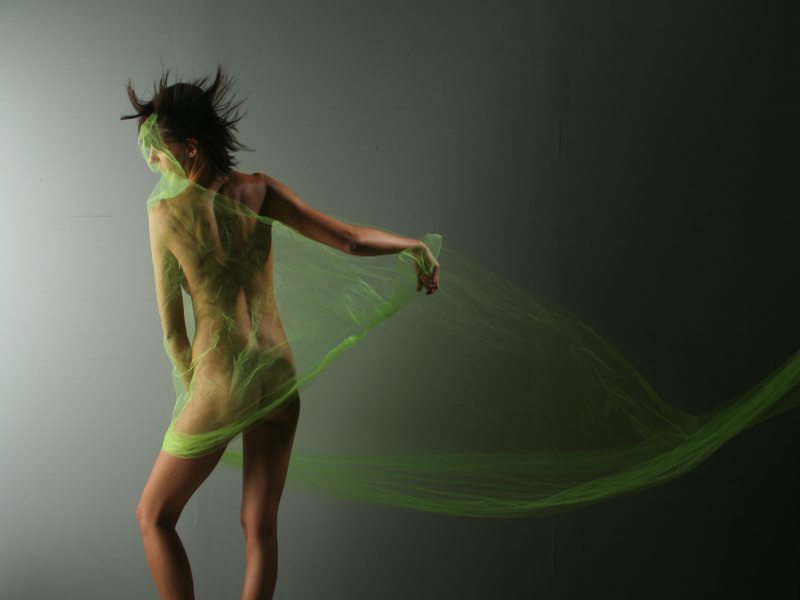
Again dipping into the files at random. This one from 2008.
This parenthetical remark, in relation to the rather small output of Alfred Stieglitz, struck me as hilarious when I think about how many digital image files I have on hard drives above my desk right now.
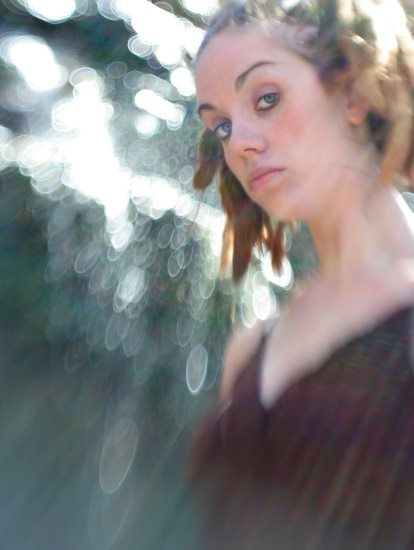
Malcolm is absolutely right of course, on several levels. First is the most obvious, editing makes the artist, or at least the photographer. In this digital world it is hellish easy to run off 600 or a thousand images in a single session. With all that material at hand the major part of any creative act will be to get rid of the garbage, to sort through the chaff and select out what few grains of wheat may be there.
Should we keep the passed-over pile in case we have need of it some day in the future? Absolutely not. Who do we think will sort through these piles of dross in the future? We've done it already and are not likely to be looking back through 100,000 images for things we missed. Our children are no more likely to be looking through our old files than we are to be going through the piles of spare prints that did not make it into the family albums. It is similarly doubtful that some future graduate student will want to sort through our abandoned snaps unless we become one of the photographic pantheon. Even then I would advise that we take pity on the poor fellow and not leave him too many thousands of dull images, which will only serve to make him reassess our lofty position.
Perhaps the greatest argument for deleting our dross is that future visitors to our work will say "he never took a bad photograph". With only excellent images to see, and in few enough categories that we can be assigned our place, we will indeed rise in the standings and perhaps become great.
Here is an exercise, allow yourself only enough memory to store 1000 images per year. In a career of 20 years you will have accumulated 20,000 amazing shots which is plenty for any artist and few enough that a curator can mount your retrospective between the time you retire and the time you shuffle off to the place of broken media cards.
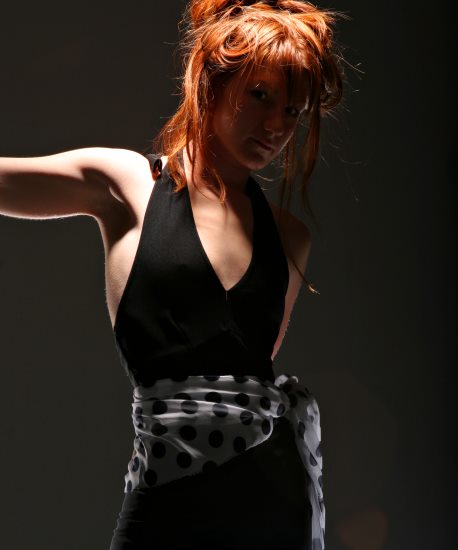
Here are two shots chosen by dropping into my archives at random and choosing the single best shot of those which were edited down at the time I took them. Two shots out of 439, and over one gigabyte of storage. I doubt I'd find much better than these in the rest of the files if I looked again.
I have to confess that I look at a lot of photography online and in many cases I really can't tell a snapshot from art. At that point I go to the artist's biography to see if they have had a show or have worked commercially.
What is it that separates art from the vernacular? I asked this a while ago and immediately thought about the Mona Lisa. There is a good argument to be made that Leonardo's masterpiece wasn't particularly well thought of until it was stolen in 1911. After that it quickly became the famous icon it is today, with crowds lining up at the Louvre just to see the empty space on the wall where it hung. Art as publicity? As fame?
Thinking about that phenomena, I now wonder if it is a mistaken conceit that we try to separate something called "art" from those "art-like" images produced by the general public. In other words, I wonder if the reason I can't tell a snapshot from a museum piece is that there is no difference between them. All humans are artistic, there is a very strong argument that this is why the Cro-Magnon pushed the Neanderthal out of Europe, why Homo sapiens replaced Homo erectus and their descendents throughout the world. The ability to abstract the world and communicate that abstraction to others is what makes us the dominant species we are.
Therefore the difference isn't between artist and artisan, art and craft, photograph and snapshot, the difference is between a good photograph and a bad photograph.
While that creates a whole other set of problems (what's good and what's bad), it seems to solve my original art vs vernacular question. But still, why did the question arise in the first place? What made me worry about the difference?
The existance of artists and patrons of course. There are indeed artists in the world, those who produce art for money and those who collect that art for pleasure and profit. There is also the critic factor, the curator factor, the gallery/educational industry that has arisen to tell us who is an artist and who is not. An artist is someone the critics, curators and gallery owners tell us is a artist. An artist is someone who produces a piece of art which can be bought for one price and later sold for a larger price. This is what I buy into each and every time I go to the artist's biography to decide whether or not they are an artist based on whether or not they've had a show or been paid for their work.
Collecting is an interesting topic in itself which I might get into later but for now, taking into account the differences between a vintage and reproduction print, authentic vs forgery, and the whole concept of provenance, I think it more or less comes down to autograph hunting for most collectors.
There was a story about a Japanese sword collector who showed up at a collector's meeting once with a box of sawn off tangs. It seems he had been told that the most important part of a Japanese sword was the signature which is on the tang. Ask any collector of Japanese swords what they think is most important and they'll likely talk about the metal or the shape, but ask them about what it's worth and they immediately start looking hard at that signature.
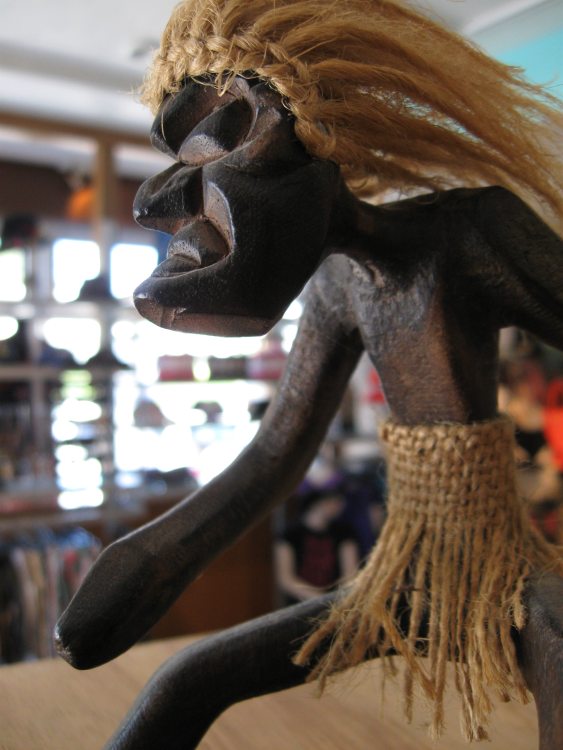
Is this sculpture art or craft? Is this a snapshot or a photograph?
It is one of four or five shots I took in an effort to get the framing and focus I desired. What I know personally is that the sculpture drew me toward it and I felt a need to photograph it. It had an effect on me and I wanted to add my contribution by creating an iconic image so I threw the background out of focus and moved in tight, making the fellow come from beyond the frame and look outside it to something further. The hope was that there would be an imbalance which would contribute to the energy of the piece.
What I also know is that if I had wanted to make this statement even stronger (more "artistic") I would have found a white background and got rid of the clutter entirely, this would have put it with Tina Modotti or Edward Weston in Mexico, both of whom I thought about as I was taking this snapshot.
Does any of that explanation influence your opinion about the image? Did it drift from idle snapshot toward photograph?
Submissions deadline extended to January 8th 2010
Looking for space to exhibit during the CONTACT 2010 Photography Festival? SHOW AND SELL YOUR WORK AT THE GLADSTONE!
The Gladstone Hotel in collaboration with Toronto’s SpeakEasy Event will once again produce a group exhibition entitled EXPOSED for the CONTACT Toronto Photography Festival, which takes place in May 2010.
EXPOSED: will showcase the work of contemporary photographers (both established and emerging). In keeping with CONTACT 2010’s thematic focus; Pervasive Influence, EXPOSED will showcase photographic works that examine connections between mass media, advertising, art and photography.” The exhibition will be co-produced by the Gladstone Hotel and SpeakEasy and curated by Christina Zeidler and David Brown.
The Gladstone Hotel is renting second floor exhibition rooms and public gallery space to individuals or groups of photographers interested in participating in this Marque event. We invite innovative, cutting-edge photographers to submit expressions of interest.
Please consider the exhibition context of the show. As much as you will be selling your work through Exposed, the installation of the work must be considered to best represent the thematic or conceptual pushes of your work. As we choose this work based on the artist, please include a brief description of your intent for the work as it related to the theme Pervasive Influence and your approach to installation.
Dates & Details:
Show Date: Thursday May 6 – Wednesday May 19, 2010
Gallery Hours: 12pm-5pm Daily
Opening Reception: Thursday May 6, 2010 7pm-10pm
Installation Date: Wednesday May 5, 2010 9am-5pm
Submission Deadline EXTENDED: Friday Jan 8, 2010
Signed Contract and Deposit: Due Jan 15, 2010
Submission Fee: Free
* CONTACT PHOTOGRAPHY FESTIVAL fees are waived for "exposed" participants
Participation Fees & Display Opportunities:
Option #1: EXHIBITION ROOM $700.00* + GST
- 1 of 9 Exhibition Rooms which open on to the hotel’s main gallery space.
- includes two week exhibition space rental and CONTACT registration (a $450.00 value)
- No commission on sales.
- Photographers may collaborate to share space and rental costs.
Option #2: PUBLIC GALLERY SPACE $150* + GST
- Artists May submit a maximum of 5 pieces for consideration.
- Artwork will be curated and hung by the organizers.
- Photographs must be professionally framed and ready for hanging.
- As the public space will be curated to respond to the theme “Pervasive Influence”, depending on the size and context of successful entries 1 or more of the entered images will be selected from those submitted.
Why should you participate?
- EXPOSED will be a registered CONTACT Festival exhibition listed in the CONTACT 2010 guide and website
- The Gladstone has become a destination venue for CONTACT visitors, drawing significant crowds for the past 5 years. The hotel will host several CONTACT registered exhibitions during the month long festival.
- Exhibition and individual participants will be promoted in Gladstone Bag e-newsletter and Gladstone website Event Listings as well as featured on Gladstone Hotel website Exhibition Page and Gladstone Exhibition Press Release
- Showcase your work in the bright, beautiful spaces and newly restored Victorian grandeur of the Gladstone
- Gallery hours 7 days a week
Interested in showing your work?
- Please
read the exhibition description to review all information. http://www.gladstonehotel.com/about/press/news/attention-all-photographers
- Email 5 digital samples of your work (low res jpg files only, maximum 1MB each), along with a short bio and a description of the work you will be presenting. Do not send originals!
- Please include the following with your submission:
- Name or Name of group
- Please indicate if you are interested in a room or public space.
- Contact information (phone, email)
- Website
- Expression of Intent. One paragraph that describes in plain language why you are interested in showing at “Exposed”, what your connection to the theme is and your approach to the installation of the work. Do not worry about art speak this is just to show the curators what your commitment is.
Email submissions to:
David Brown, david@blttogo.com
*Participation Fees are only paid if your work is selected to be part of the show. A 50% deposit is due with signed contract on Jan 15, 2010 Balance of participation fees are due April 1, 2010
Gladstone Hotel
1214 Queen Street West
Toronto, ON
416-531-4635 www.gladstonehotel.com
http://www.gladstonehotel.com/about/press/news/attention-all-photographers
I keep waiting for the digital revolution to happen. I haven't a clue what it will be, but I'm sure it will come.
What we have had so far is important, but not a revolution. The development of photography itself was the first revolution, and the first big wave of photography was the deguerreotype, a one-off image of the world done without the intervention of paint or pencil. Quite influential in many ways, including its effect on the other arts. This was the first photographic method put "out there" for the public, thanks to the French government's purchase/licensing of the patent to allow the public to use it.
Next I'd have to say was the negative, a way to create multiple copies of an image without involving any form of engraving. In fact, photo-engraving (one of the reasons photography was created in the first place) is quite revolutionary itself I suspect.
After the negative I'd say we would have the roll film of Mr. Eastman. Dry plates were pretty important I suppose but they were not really that much of a leap from wet plates, just a way to delay that processing step, a convenience rather than a massive shift, but roll film that was shot and sent away to be processed brought the public into the equation.
What since roll film? Cameras got smaller, faster, zoom-lensed, but no real paradigm shift. Polaroid instant film just made things faster, returning us, one might say, to the days of the wet plate which also had to be developed right away. Perhaps colour film was important enough to be called a revolution.
Digital? We have a shift in the recording medium, but we've seen that before with the shift from deguarreotype to paper with silver salts to acetate film. From polished metal to albumin paper prints to silver gelatin. No, a digital SLR acts and feels just the same as a film SLR. Instant review? Polaroid.
Numbers of images per dollar? Well perhaps, but if one had money, one could take as many shots as desired with film. Still, the ability of your average amateur photographer to "spray and pray" taking a hundred shots and looking for that single decent one may prove to be important in the future. On the other hand, the revolution may be the acquisition of editing skills by the general public as the number of images finally overwhelms the ability to look at them all and forces everyone to become selective, even with snapshots.
Display method? We can now take a disk full of images and display them on a computer screen, the television or across the internet. However, in the past we could take transparancies and project them on a screen (as a kid I remember heading down to the local park on summer evenings where we watched travelogues on an outdoor screen while swatting mosquitos). Transparancies themselves were of course just continuations of the magic lantern show with it's painted glass plates.
Extreme low light sensitivity? Infra red film.
High Dynamic Range? You mean taking two negatives and printing them out combined with dodging and burning or using a graduated neutral density filter? Incidentally, how does one get more dynamic range than the white of the paper and the blackest ink in the ink set? Don't we mean compressed dynamic range?
Better sensors, lenses and processing are incremental, not revolutionary.
Digital editing? Perhaps we are taking the masses who adopted the roll film and putting them all back into the darkroom where they will invent stunning new ways of presenting images, but I don't see it happening. There are more darkroom experimenters around now than there were, yes, but again, not a revolution that I can see.
I think if there is a revolution it has happened not in the still photography world, but in moving pictures. Digital video, especially digital video in 35mm format has put the serious tools of the movie studio into the hands of Uncle Joe, just as surely as roll film put still photography into the hands of Aunt Maude.
Books haven't changed size much, photographs on walls however, seem to be getting huge. Not that they weren't large occasionally, for instance the 1975 Richard Avedon show Portraits, 1969-1975 at the Marlborough Gallery, New York featured three murals, the largest of which was 420 x 96 inches. Finally, what is brand new (at least as a public display format) is the internet thumbnail.
Thing is, there are certain compositions, subjects and techniques that suit one size but not another. The size influences the subject, or we might say, form dictates function.
Here are two simple examples of subject at different sizes.
Thumbnails
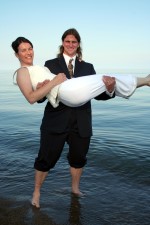
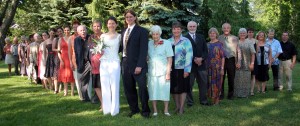
Which is the better shot at this thumbnail size? Think if we made them even smaller.
Now check out the album size:
Bride, album
Party, album
Both are OK but the wedding party still isn't what it could be, so check out the large size to see how it continues to improve while the bride photo has not kept pace.
Bride, large
Party, large
So why don't we pay more attention to the size of our display? I suspect because we don't have to. In the "old days" of film, we had 35mm which was good for about 8x10 inches, (and incidentally, thumbnail size was contact sheet size). If we wanted anything more than 8x10 we went to medium or large format film so there was a natural change in the subject matter as we dealt with the bulk of the larger formats and the slowness of sheet film. With our 15mp noisless digital slr machines and our digital editing programs to up-res we have the option of massive prints with nose to the ink detail.
Is it any surprise that we see prints that would be perfectly nice at 8x10 sitting on the wall at ten times the size? Cost you say? A painter might charge less for a miniature because it's necessarily a simpler composition and takes a lot less work to finish, but if you're charging a couple thousand dollars for a print, the difference in cost between book sized and huge isn't all that much.
More telling though is that all the work in the photograph has been done before the printing, it takes no more effort to print an 80 by 100 inch gallery piece than a 3x5 card. Extra time? maybe a coffee.
Let's return to the digital slr for just a moment. Is it a good thing to be making huge prints with this camera without some thought? I mean, can we make a huge print with anything we take with an slr? I suspect if you've tried it you know you can't. To get a huge print you need to treat your slr like a view camera, get out the tripod and start paying strict attention to your focus point, among other things.
In other words, pay attention to the final size when you're looking through that viewfinder.
The photograph is not the thing. That seems rather obvious, and it has been said before. Magritte wrote on a painting of a pipe, "this is not a pipe" in French of course. This caused quite a stir at the time, but now we know for a fact that an image is not the object represented.
Yet photographers obsess over such things as sharpness, resolution, colour balance and any of a dozen other technical bits and pieces which are said to approach the truth of the image depicted. Journalism today is all about not processing the image, about leaving it as it is captured in the camera. What is this except a confusion between the image and the object depicted? Why are we shocked when a celebrity is photoshopped into svelt blemishless perfection and then revealed to have lumps and zits in the paparazzi press? And why do we assume the lumpy version is the truth? We all know that the camera puts on ten pounds, perhaps photoshopping those hips inward is more truthful than that beachy bulge.
I know my ancesters, my grandfather and my father through photographs, it is only images that I have left, the men are long years in the ground. Not only that, but whole parts of my own early life are known to me only through photographs. I don't remember the events, I remember the photographs in the album, and that feels real to me. I remember my grandfather and my father more vividly, more "truly" through what I remember of their photographs than through any actual images I have in my head.
Is a memory of a photograph less real than a memory of the person himself? No image, and no memory is the object itself. No mental construct can be the object. Quite literally, "what I see is not a pipe", even if I hold in my hand what you or I would call a pipe. I can see it, touch it, smell it, taste it and even hear the tobacco burning in the bowl, but that mental image is no more the object itself than Magritte's painting.
And no less.
Samuel Johnston commented on Bishop Berkeley's denial of material substance by kicking a rock and saying "I refute it thus" which of course meant that one can trust one's senses when confronting a rock with one's foot. But again, he knows of the rock through its effect on his foot, but he cannot know the rock itself without the senses.
We know an object in a photograph simply because we see the photograph of the object. That object is, in a very real and truthful sense, as real as if we were looking at the object itself. It is not the thing, yet it is the thing.
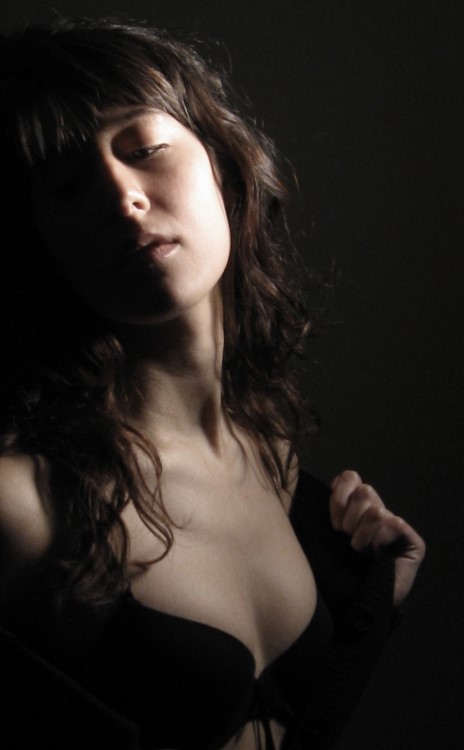
This is not Natalie
180 magazine editor George Qua-Enoo just won the monthly Fluid Photo contest at Evrium.com with his shot of "Matabeto (the engagement ceremony)"
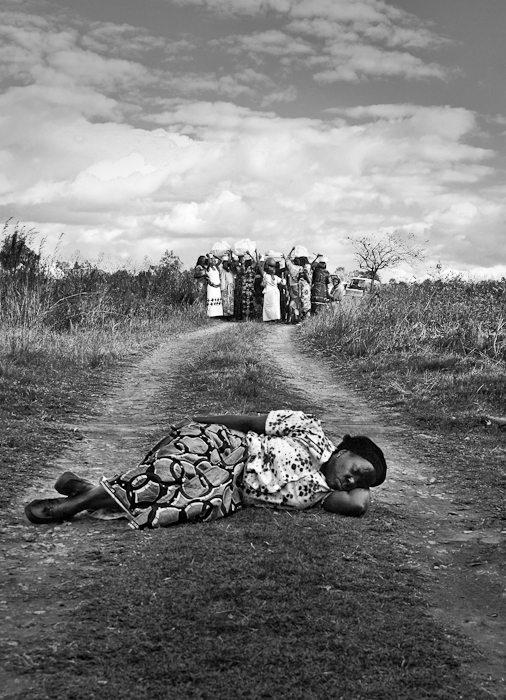
I am very honoured to be awarded this prize. This was my third submission for Evrium's contests this year. My first entry was the runner up in May.
I took this picture last summer when I was vacationing in Zambia visiting family. There was a engagement ceremony procession for an extended family member. In Zambia, once a couple is engaged there will be many ceremonial rituals performed throughout the year before the actual marriage ceremony takes place. This is the Matabeto ceremony. For the Matabeto ceremony the bride-to-be's family will cook lots of traditional dishes and present them to the groom-to-be and his family and elders at his family's home. The bride's family will carry the food and walk to the groom's house, accompanied with drumming, dances and chants. Lots of money will change hands and sometimes the bride's family will demand money before they walk up to the house. The longer your driveway, the more money you will have to give!
In this shot, the bride's family was a bit late so when the
groom's family member heard them coming she laid in the
middle of the driveway in protest to show that she'd been waiting all
day and was very hungry for food.
Curated online art exhibitions from the Cultural Olympiad
As a countdown to the 2010 Winter Games, let CODE Screen 2010 animate your screen and captivate your imagination. By the end of the Games, CODE Screen 2010 will have showcased the work of more than 100 of Canada's finest creators, including recipients of the Governor General’s Award for Visual and Media Arts. Enjoy the works of artists including Alex Janvier, Michael Snow, Aganetha Dyck and Kenneth Lochhead in 14 exhibitions curated by Kate Armstrong, Dave Dyment, Donna Wawzonek, Nathalie deBlois, Milena Placentile and Daina Warren. The best way to experience CODE Screen 2010 is to install the application putting you one click away from all the content. You’ll receive an automatic prompt whenever a new exhibit is launched. Or come back to vancouver2010.com/code whenever you need an art break.
Click here to go to the CODE Screen 2010 launch page!
Is this what it's like
to be a dog
To smell the world around me
see traces on the wind
Hear the remnants of passings
of others
as if they had painted a line
on the floor
With a big arrow that says
"I just walked through here"
All this
as I walk across the line
Mr. body odor took
on his way to the sauna
I think I'll take a bit of extra time
on the rowing machine today
===
Consider your other senses the next time you go out with your camera. What does a pine forest smell like after the first snowfall? Can you shoot that? What can you hear in a bamboo grove? Can you show me that in a photograph?
Try.
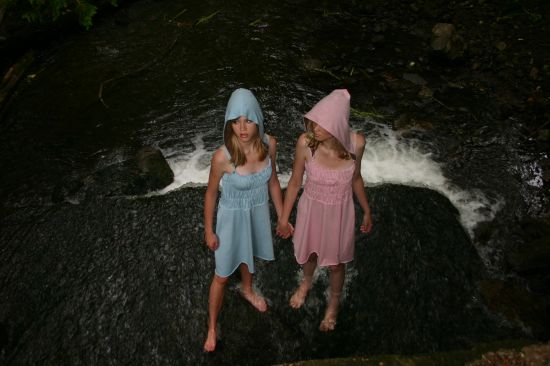
Photos can be real, symbolic, truthy but not, to any great extent, narrative. They are pretty much always "of" something, so they're real. Even photograms are real reactions of silver to light on paper or a real reaction of a scanner sensor to what's on the scanning bed.
A photograph can be symbolic, it can represent something, stand as a symbol as the word "soldier" or "postbox" stands for something.
A photograph can be the truth, or at least be truthy in as much as the image is "of" something that exists or at least existed, but we all, hopefully, know that point of view, framing and all the other choices we make (even without post-processing) will modify just how well the image reflects what is really there. However, even when the image is highly un-representative of what was photographed, it has a truthy feel.
All that may be true but none of it means that a photograph will tell a story. Even photo sequences don't really tell a story, for that we need captions, we need to be filled in on the context of the images, we need to hear or read the story, we can't see it.
What we can see is an infinity of stories, or none at all. Never "the one" that is the real story.
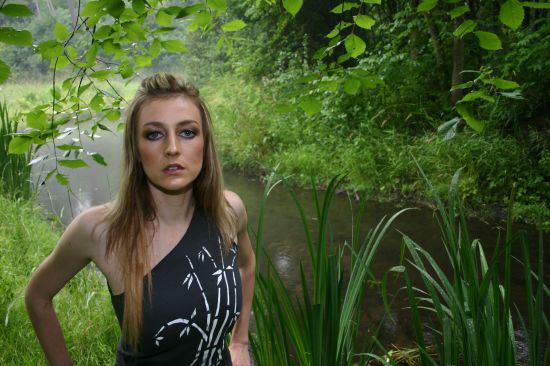
In the art world representational art can be considered against abstract art, as "representing" something recognizable. Figurative art is representational art that depicts a real thing, it's usually assumed to be a human figure but need not be.
Realism is the accurate and supposedly objective representation of the world as it is, and as a named art movement existed from about 1850-1880. These years encompass the beginning of photography which is often cited as an influence on Realism.
In the early 20th century there were several North American movements associated with realism, the most notable would likely be the Ashcan School, and again the scene was life as it was found, notably in this case, the alleyways of the city.
Photo-realism is a more modern movement from the 1960s and '70s and once again depicted life as found, but this time painted in such fine detail that it is "photographic".
So what is photography? Can it be anything but realism or photo-realism? Of course we can post-process the image to make it unreal, or perhaps use special filters on-camera, but what about what comes out of the camera "straight"? Can it be anything but real?
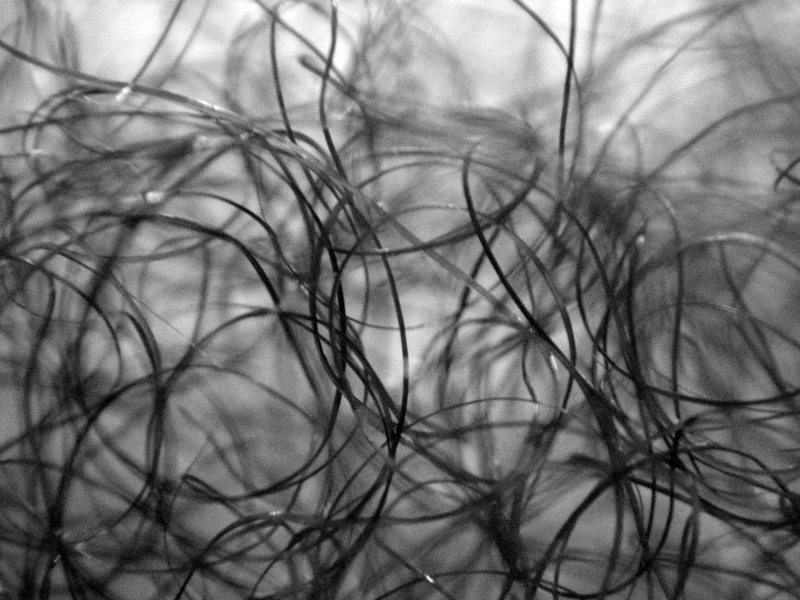
This image, I assure you, is exactly as it came from the camera except for conversion to black and white which is of course the original colour-state of photographic images. It is real, but obviously not what we expect to see when we say "photograph". While it is a photograph I think the image would be much better described as abstract than as (photo)realist or even representational.
It is often stated that photography is "of something" as if that has some defining meaning. We may assume from the statement that a photograph must be representational but it should not be forgotten that a photograph has no context. While the above shot is "of something", without context there is no way of placing it as a representation of anything. There is nothing narrative about it, no clue even to scale. Looking at the exif information tells us that it was taken at 38mm equivalent and under manual focus. The other technical information is also there, the type of camera, sensitivity, shutter speed and whatnot, but none of that helps us get any further along toward identifying what this is "of" let alone it's meaning. Our pixel-peeping inner-gearhead isn't helping.
We think further, and consider where we are, we're looking at a blog rather than in a magazine or newspaper so again, little help. If it were a newspaper we might assume "journalism" and make certain assumptions about what we're looking at. We would certainly be looking for a caption which is supposed to tell us exactly what we're looking at....
And that is my point. A representational image does not necessarily contain any useable information to tell us what it is "of", or what it means. That is left to the caption, the artist, the curator or the art historian. Or it is left up to us to give it what meaning it has.
There's the usual advice to any beginning photographer, either fine art, portrait, commercial or fashion. Look at lots of other photographers and lots of photographs.
Seeing that we swim in a sea of photographic images I really don't know how one would avoid looking at lots of photographs, but is it a good thing to do?
If one is a local baby and high school senior photographer I suppose one should look at what the local photographers are doing so as to make sure you live up to the expectations of the local clients. After all if someone is going to a studio to get one's photo taken, one expects a certain type of photograph.
Commercial photographers, architectural photographers, catalogue photographers will also want to check out the competition to see what is expected in their field. If a magazine never publishes out of focus black and white images of kitchen appliances, it would be handy to know that before submitting one's shots of same.
However, if one is looking for an individual voice, a unique vision, a personal style or a way to see one's life with a whole new meaning, I'd almost be tempted to say one should stop looking at other photographs. Someone else's work is not going to tell you how to be unique or how to have a new way of looking at things. You can't see something new by looking at something that has already been done.
Don't even think of going at it by the process of elimination, by the time you have looked at every photograph in the world so that you know what hasn't been done, someone will have done that shot behind your back.
No, the only reason to look at other photographs, if you want to contribute something of yourself to the cultural landscape, is to join the conversation. Look at the great photographs, the admired photographs, the photographs that the museum curators say are important photographs, and then add your own comments and criticisms, by way of your own photographs, to the discussion.
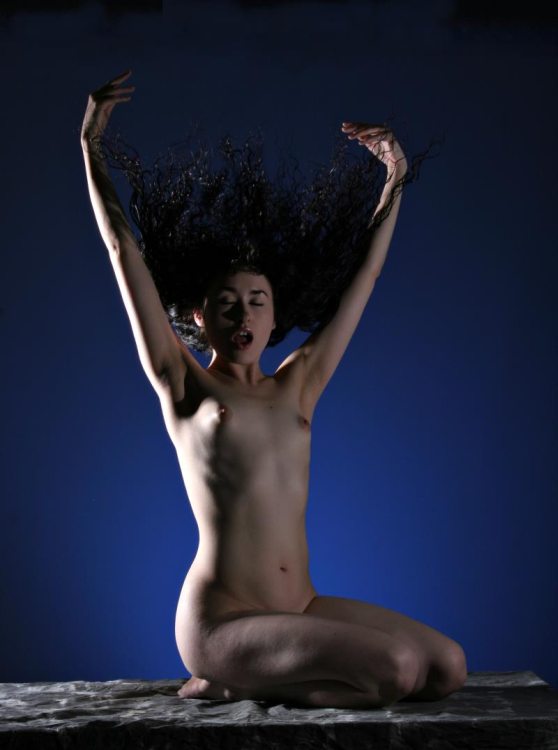
There's my contribution to the discussion of "young ladies with no clothing and hands in the air making a Y shape.
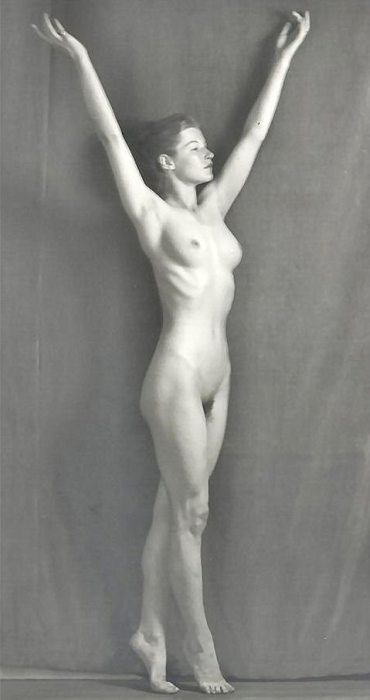 Men talk of killing time, while
time quietly kills them. ~Dion Boucicault
Men talk of killing time, while
time quietly kills them. ~Dion BoucicaultTime goes, you say? Ah no!
Alas, Time stays, we go.
~Henry Austin Dobson
Who is this woman? She looks a lot like my mother... well she looks a lot like what my mother looked like when she was young, when she was a model.
This woman is perhaps still alive, perhaps a grandmother, perhaps with children who know of this image, perhaps not.
Do her grandchildren like this image? Are they embarassed by it? Would it be a scandal in the community if it were to be revealed at the local church bazaar?
Time! the corrector when our judgments err. ~Lord Byron
Time heals what reason cannot ~ Seneca
If so, in another 40 years that embarassment will be forgotten, that shame wiped clean by the death of all those who gave shame and all those who accepted it.
In the meantime we have this image, this pose, this lovely young girl and the shape of her limbs. It's not a great image, not one of the classics, but it is a photograph of a real person, who lived and, I hope, loved and led a full life doing what she wanted to do.
She met a photographer, perhaps he paid her, perhaps he was a boyfriend or a husband. She may have been shy and took her clothes off in another room, she may have been bold and left a pile consisting of a shirt, pants, socks and on top of it all, panties, perhaps red with a ribbon at the side.
Perhaps she was a student, making some money to pay for her education. A life model for the fine art department of the local college. Maybe she was a math major and went on to have a career as a teacher. This must have been before the internet because she wasn't fired for posing like this. Or at least I hope she was not.
Watches are so named as a reminder - if you don't watch carefully what you do with your time, it will slip away from you. ~Drew Sirtors
I often say that everyone should pose nude while they are young and fit. If they do not they will not have an image like this to share with the grandkids when their kids aren't looking... or just to pull out late at night and say "I used to look like that", then put it away again.
What stops people is shyness about their own bodies, fear of what their families will say, and most upsetting of all, worry that they will be denied a job or hindered somehow in their careers if someone sees the photos and recognizes them. Very rarely do I talk with a potential model who will not pose nude because he or she believes it is wrong, there is always an outside reason. What will other people say about me, about my body?
Time is the coin of your life. It is the only coin you have, and only you can determine how it will be spent. Be careful lest you let other people spend it for you. ~Carl Sandburg
I have some wood in my shop called bog oak. It fell into a bog about 5000 years ago and lay there getting blacker and blacker until someone hauled it out 5 years ago, dried it and cut it.
Think about that tree, it lived about the time that man invented writing. Cities were still a new idea. Think about the civilization that existed then, kings and judges, religions and gods, dead for thousands of years.
Think about a man sitting under that tree, worried about what the old women in the village would say about him and what he did the night before. What was it? Or perhaps he hadn't done it yet, perhaps he decided that the old women were too terrible to face and so he did what they wanted, and he lived the rest of his life in regret. Perhaps he became a rich man who died owning a lot of land. A rich man who did as he was supposed to do, but never got to do the thing he most wanted to do for fear he wouldn't have that money when he died.
How do you feel about that?
Pick my left pocket of its silver dime, but spare the right - it holds my golden time! ~Oliver Wendell Holmes
Read that quote again, more carefully this time. In the time it takes to make bog oak not only will you and I be forgotten, but our civilization will be at an end with perhaps three or four having come between. Mankind may not even be able to understand this writing... provided the computers it lives on replicate it for that many years. Hideously unlikely.
Yet in 5000 years it is just possible that this photograph will still exist, and someone then will look at it and wonder, hope, that the girl had a good life.
Surely we can wish the same for ourselves and stop living for other people. Surely we can start living like we, and the old women in the village, will be forgotten dust in a thousand years.
Three or four of the major magazine groups are getting together to start the migration to digital reading tablets. Yes I know, they've been migrating for ten years but this time it seems serious.
A lot of the talk is that the content, specifically the photography, will be even more ephemeral than when the magazines were print monthlies. Digital media will be measured in terms of days rather than weeks.
I don't believe it. One of the big advantages to the web that I saw ten years ago when I started EJMAS.com (a bunch of online martial arts magazines) was the potential for a permanent and growing archive of past articles and issues. More content means more viewers, more links and higher ranking in the search engines. Digital publications can be stored and served to viewers at miniscule costs compared to print publications, and viewers can always go online to see their favourites without the hassle of keeping libraries of issues.
Paid content? Sure, but I don't see any advantage to deleting it after a month... put it up for free or charge less for it, or leave it at full current-issue price. It costs next to nothing to do any of those so why not? If you get a single buy per year it will pay for the storage space.
No, if you're going to sell photography to an online magazine you should consider that it will be online for many years, be careful how you sell it.
Charis Wilson passed away last Friday at the age of 95.
If you don't know who she was, shame on you and go now to Google and look her up. Don't forget to do an image search.
Lecture Nov. 28
Presentation House Gallery, Vancouver
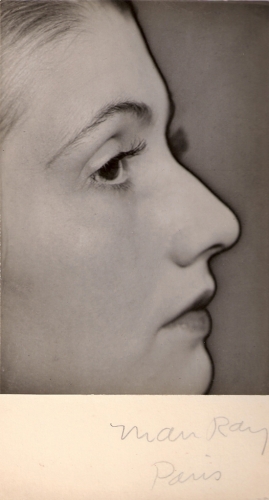
Man Ray, Untitled (Solarized portrait), c. 1930
gelatin silver print, Courtesy the Malcolmson Collection
on exhibit until December 20, 2009
The Malcolmson Collection
Lecture by renowned photography historian on Saturday, November 28, 2pm
On exhibit at Presentation House Gallery is a selection of photographs from one of Canada's most unique and significant art collections, shown for the first time in a public gallery. Over the past twenty-five years Ann and Harry Malcolmson, who live in Toronto, have assembled a rare collection of vintage photographs that span the history of the medium. After a long period of collecting contemporary art, they were gradually drawn to early twentieth-century experimental photography, and then began to investigate nineteenth-century material before expanding into classic modernist and contemporary works. This exhibition selected from over two-hundred photographs offers a rare opportunity to witness the scope and depth of this remarkable collection, that reveals the scholarship, intuitions and passions of the collectors.
The exhibition features iconic as well as anonymous images that underscore the Malcolmson’s interest in experimental approaches to the medium, from Fox Talbot to Robert Frank. The beginnings of photography is represented by salted paper prints from paper negatives of the mid-1840s and twenty-first century photography, by several of Vancouver’s most notable contemporary artists. This range of images draws links between the earliest innovations in the medium to those of today; for instance, Gustave Le Gray’s 1850s seascape produced from two negatives precedes the collage techniques of modernist photography that continue in digital practices. While alluding to historical developments and stylistic periods, the exhibition knits together images from diverse contexts, genres and time frames. The significance of photography as both an artistic practice and mode of perception is considered in relation to its profound impact on visual culture and social history. Many of the nineteenth-century images resulted from commissions for empirical records of significant events and social conditions evident in the pictures of archeological and urban sites. In the twentieth century, more fragmented and prosaic views of the world dominate.
Photography as an act of drawing with light is made palpable throughout the exhibition, from the long exposures that fail to still the breath of a subject, to photograms that record movements of light on paper, to a film montage of moving reflections. Human figures often appear veiled and immaterial, as if apparitions. The surrealist impulse to conflate mind and body and to evoke psychic space is expressed in the bodily distortions of the many phantasmagoric figurative works. A grouping of portraits evolves from stiff formal portraiture of sitters posing in conscious self-portrayal to an increasing focus on isolated gestures and fleeting moments of someone caught offguard. While associated with naturalism, the artificial spatial effect of photographic optics evident in the condensed spaces and surface details of the nineteenth-century landscapes becomes more pronounced in the skewed and montaged perspectives called for by the chaotic energies and visual dynamics of modern cities. Abstraction and visuality itself as subject matter are prevalent threads in the exhibition.
The exhibition reveals how developments in camera and print technologies impacted “the new vision.” The unique character of each vintage print emphasizes the very materiality of photographs—their physical surfaces, the patinas of aging and accidents of chemicals interacting with paper. These visual effects emphasize the mysterious, elusive qualities of photographic images as traces of a moment in time and the strong poetic and elegiac mood in The Malcolmson Collection. A vitrine of publication materials offers clues to the importance of the book form, especially albums and portfolios, to the history of the medium.
Shadow and Substance
Saturday, November 28 , 2pm
A talk on the importance of understanding materials, process and condition in fine art photographs at Presentation House Gallery
Grant Romer is a distinguished scholar of the history of photography and is currently the Director of the Advanced Residency Program in Photograph Conservation at George Eastman House, International Museum of Photography and Film in Rochester. He is recognized internationally as a leading authority in the history, practice and conservation of early photography. He has curated many exhibitions, and has consulted, lectured and written on photography extensively for museums such as the State Hermitage Museum in St. Petersburg, the Victoria & Albert Museum in London and the Metropolitan Museum of Art in New York.
Presentation House Gallery
333 Chesterfield Avenue
North Vancouver, BC V7M 3G9
604.986.1351
www.presentationhousegall.com
Gallery Hours: Wednesday to Sunday, noon to 5pm and Thursdays noon to 8pm
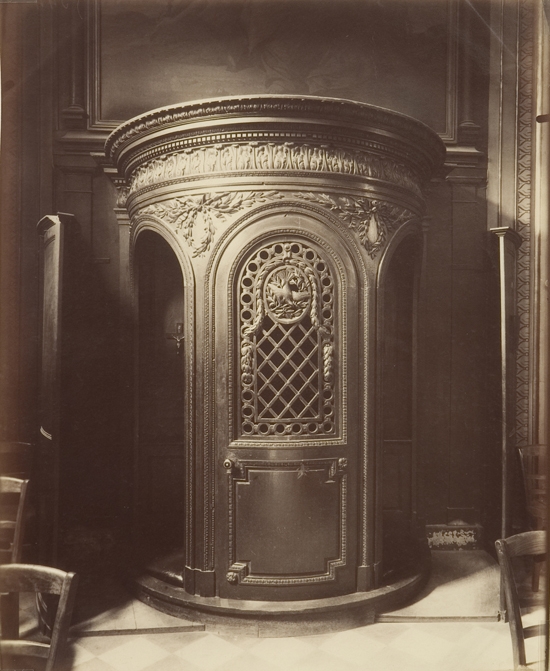
Eugène Atget, Le Confessional, St-Germain-des-Prés, c. 1900, Albumen print
Courtesy the Malcolmson Collection
Check the Archive for 180 stories
a new small photography books by me:
21 grams of dust
a collection of poetry, photography and paintings
full preview:
http://www.blurb.com/books/976788
7" x 7"
80 pages
50 photos
36 poems
8 paintings
Cheers
Wolf189
www.wolf189.com
180 story here
and here
I'd like to submit to your attention my two new book:
http://www.blurb.com/bookstore/detail/676689
http://www.blurb.com/bookstore/detail/860481
A preview is available on blurb.
regards
Gaetano Belverde
I follow a lot of blogs and do some random walks through the net to look for photography. One of the things I have noticed lately is several commercial photographers who have delved into the art world. Generally they get an idea and work it with several models to make a series.
Often the idea is a simple technique, get famous people to jump in the air, put them in a shower stall and steam up the door, too close portraits with big cameras and too short lenses, giant shots of industrial waste, that sort of thing.
It's interesting but it's what's called a one-trick pony, something that should consume a couple day's work rather than years.
Don't limit yourself, if you get a decent idea beat the thing into the ground as soon as you can and make the room for the next idea. No need to be afraid that you'll never have another good idea.
Have faith in yourself.
